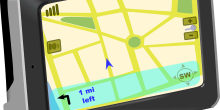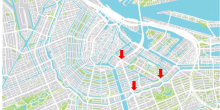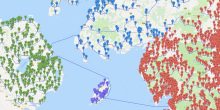Arriving 1h30 before take-off is just enough to catch your flight.
I bet that you can relate to it when I tell you that last month I had a terrible experience at Schiphol. That, if you had to fly as I did, you probably also experienced an infinite queue at the security check and wondered whether you would be on time for your flight. And once you reached your destination, you wondered whether your luggage also made it on time.
More annoyingly, on your trip back home, exhausted and sad about its end, you stood for hours in front of the luggage belt. The situation at Dutch airports, as well as many other airports in Europe, has been untenable for many months now. Furthermore, it seems that this situation will not improve in near the future. As we all have heard in the media, this issue is a consequence of the shortage of trained personnel at the airports. But, what if I tell you that is not the only issue? What if I tell you that long queues are also caused by the impatient passengers that arrive too far in advance at the airport? Today, we will analyze how the organization of the security check queue affects the waiting time of passengers.
The mathematics of queues
The area in mathematics which aims to understand the behavior of queues in daily situations is known as queueing theory. The queue that usually comes to our minds first is the one at a supermarket. There is a bunch of cashiers and each customer needs to queue up at one of them and waits until they reach the head-of-the-line and are served. This model is known as the supermarket model. You will have also noticed, that the queues at shops like Primark and MediaMarkt are served in a different way. We have again a bunch of cashiers, but now all customers queue up in a central queue and wait until they reach the head-of-the-line and are then served by the next available cashier. The main challenge when we want to mathematically analyze such queues is that the times at which customers arrive are not predetermined, there is some randomness in them. Thankfully mathematicians have developed techniques that allow researchers to include such random events in mathematical models.
The queue at the security check is significantly more complex than the ones in the previous examples. Here all passengers queue up in a single queue and wait until they reach the head-of-the-line and are then routed towards the next available security check station. On top of that, each passenger has a deadline before they need to go through the security check, this is the boarding time of their flight.
The main objective when organizing a security check queue is that all passengers reach their flights, that is before the deadline expires. Last summer for example, the Dutch news platform NOS stated that 5000-10000 passengers were losing their flights per day in July at Schiphol airport. The second order objective is that the time in the queue of these passengers, a.k.a. waiting time, is minimal. In my personal experience, and I bet that many readers will agree, the waiting time at the security check queue has been around 4-5 hours, which is excessive compared to the 1-2 hours that we are used to.
Making it on time without wasting other peoples time
In the following, we will analyze how the organization of the queues impacts both our objectives by doing the math in a simplified example. Let us assume that Schiphol airport opens at 5:00h, and that the first flight departs at 8:30h. There is a single flight every hour from that time on, and each flight has 200 passengers. We also assume that passengers should have gone through the security check at least 30 mins before departure. That is, passengers of the first flight need to go through the security check by 8:00h.
Let us assume that the capacity of the security check is 50 passengers per hour, and passengers with departure times 8:30 and 9:30 are all present at the queue at 5:00, that is, 3-4 hours ahead of take-off. In this case, by 8:00 only 150 passengers will make it through the security check, and by 9:00 only 200 passengers. Hence, most of the passengers on the first flight will catch their flights.
If the first 150 passengers were those on the flight at 8:30, at least 150 passengers out of 200 will catch their flight at 8:30. But assume that passengers queue up in this order: 50 passengers of the flight at 8:30, 100 of that at 9:30, 100 of that at 8:30, 100 of that at 9:30. Then, only 50 passengers out of 200 will catch their flight. That is, if passengers for the 9:30 flight queue up before passengers of the 8:30h flight, there will be even fewer passengers that catch their 8:30 flight.
The main issue in this example is that the capacity of the security check is too small for the number of people that are expected. The second issue is that passengers with earlier flights might get trapped behind passengers with later flights. These are, grosso modo, the main issues that airports experience currently.
We all need to behave rationally
Let us assume that the capacity of the security check is instead 200 passengers per hour. We are going to analyze 3 different scenarios:
(1) For the first scenario, assume that all passengers arrive 3:30 hours in advance of their take-off time, and all passengers will catch their flights. For instance, passengers of the 8:30 flight will arrive at 5:00 and will go through the security check by 6:00. Hence, the first objective is satisfied, but passengers will spend three hours at the airport, which is excessive.
(2) Assume that no passengers arrive at the airport at 5:00 and that at 6:00 the following passengers arrive and queue up in this order: 100 passengers on the flight at 8:30, 100 passengers on the flight at 9:30, 100 passengers on the flight 10:30, 100 passengers on the flight 9:30, and 100 passengers on the flight 8:30. In this case, the passengers
on the flight at 8:30, 9:30 and 10:30, arrive 2:30, 3:30, and 4:30 in advance at the airport, respectively. By doing the math, by 7:00 the passengers that have gone through the security check are: 100 passengers on the flight at 8:30 and 100 passengers on the flight at 9:30. And by time 8:00 those passengers are: 100 on the flight at 10:30 and 100 on the flight at 9:30. By 8, 400 passengers made it through the security check, including all the passengers on the flight at 9:30. But we can see that there are 100 passengers that stand at the security check queue and will lose their flight at 8:30. For the passenger on the flight at 8:30, 2:30 in advance seems a reasonable time to get at the airport given that the security check’s capacity is large enough and that they are traveling in the first flight of the morning. However, since passengers on flights at 9:30 and 10:30 have queued up ahead of them, they haven’t been able to catch their flight. This is again the issue that we have observed in the first example, that passengers with earlier flights will get trapped behind passengers with later flights. The latter is in fact another main issue that airports experience currently.
(3) Assume that all passengers arrive 1:30 hours before their take-off time. In this case all passengers will catch their flights and will spend only 1:30 at the airport. That is, passengers of the 8:30 flight will arrive at 7:00 and will pass security check by 8:00, and passengers of the 9:30 flight will arrive at 8:00 and will pass security check by 9:00, and so on. By saying to each passenger at what time they need to join the security check queue we can ensure not only that all passengers will be on time for the flight, but also that the time at the airport of the passengers is minimal. Hence, this timing structure satisfies both our objectives.
However, this time schedule will work only if all passengers agree to join the queue at their given time and not before. If any passenger joins the queue earlier than they are expected to, they will cause a scenario similar to that described in case (2), where some of the passengers lose their flight.
From these examples, we can conclude that first, there needs to be a compromise between the number of people that can go through the security check per hour and the expected number of passengers. And second, each passenger should be assigned a time at which they join the security check queue. This way of organization will ensure both that all passengers are able to catch their flights and that they do not waste too much time on it.
The organization of a real airport is much more complex and enables other processes in addition to the security check queue. However, there is hope to find a mathematical solution to improve their functioning.
The featured image is from Mohamed Hassan via Pixabay.






